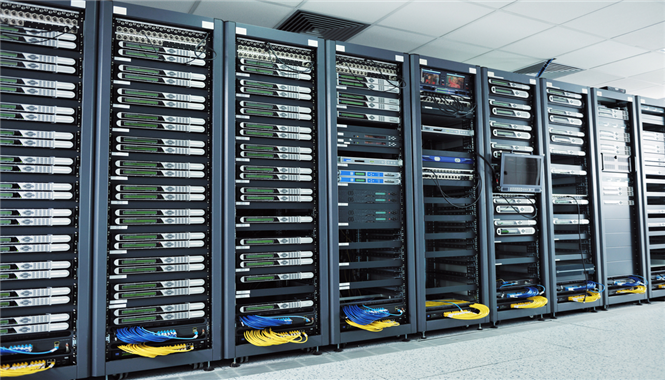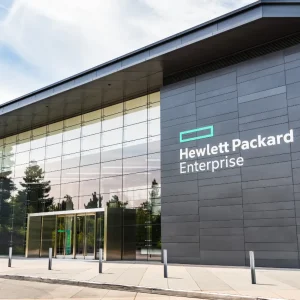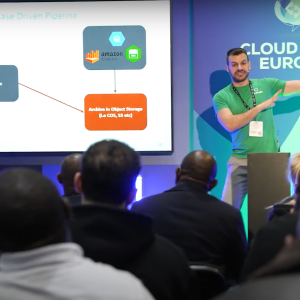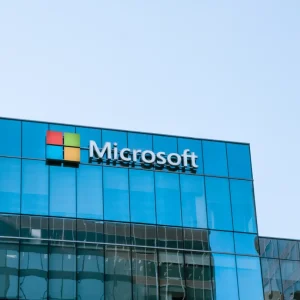
The Open Compute Project (OCP) has today gained new traction with Google, Microsoft, Equinix and Schneider Electric tapping into the Facebook project.
The news was unveiled at the OCP US Summit in San Jose, California. The OCP is a collaborative community focused initiative for redesigning hardware technology to support the increasing demands on compute infrastructure.
Google has joined the OCP and will initially contribute with a new rack specification that includes 48V power distribution and a new form factor to enable OCP racks to fit into its data centres.
The company said it has been working on 48V rack power distribution since 2010 and identified that it was about 30% more energy-efficient than its earlier-generation 12V systems.
Google technical program manager John Zipfel said: "As the industry is working to solve these same problems and dealing with higher-power workloads, such as GPUs for machine learning, it makes sense to standardise this new design by working with OCP.
"We believe this will help everyone adopt this next generation power architecture, and realise the same power efficiency and cost benefits as Google."
Google believes there are other areas of possible collaboration with OCP and is aiming to work with the OCP on disk solutions for cloud based applications and new software for server and network management.
Elsewhere, Equinix has announced that it has incorporated technology designed by Facebook and available from the OCP to help develop an open source ecosystem inside Equinix International Business Exchange (IBX) data centres.
Equinix and Facebook will collaborate on technology innovation to build an open source platform for both software and hardware. The company expects the project to enable enterprises to create next-generation IoT and hybrid cloud platforms.
The collocater said this ecosystem will be built on a new, open source architecture which will enable faster innovation, and create greater efficiency in data centre and hybrid cloud deployments.
Equinix will be using Facebook’s Wedge open source switches. The platform will be powered by the Mesosphere Datacenter Operating System (DCOS), based on Apache’s Mesos architecture.
According to a company statement, DCOS is ideal for Open Compute equipment because it aggregates all data centre resources into a single pool, automatically schedules workloads wherever they can fit, and simplifies the process of managing complex systems such as Apache Spark, Apache Kafka and HDFS.
Ihab Tarazi, CTO at Equinix, said: "By working together [with Facebook], we can drive technology evolution for interconnection by defining the next-generation architecture for the network and cloud edge, thus ensuring our customers have the scale and performance they require for newly evolving platforms and applications."
Jason Taylor, chairman of the OCP Foundation, and VP of infrastructure at Facebook said that the OCP community works best when there is strong collaboration between companies.
In other news, Microsoft announced it will make is Software for Open Networking in the Cloud (SONiC) available for free to Open Compute users.
SONiC is a collection of software networking components required to build network devices like switches, according to Azure’s CTO Mark Russinovich.
He said in a blog: "Together with SAI (Switch Abstraction Interface — which Microsoft contributed last year), SONiC will enable cloud operators to take advantage of hardware innovation, while giving them a framework to build upon open source code for applications on the network switch.
"We believe it’s the final piece of the puzzle in delivering a fully open sourced switch platform that can share the same software stack across hardware from multiple switch vendors."
Lastly, Schneider Electric has unveiled new products aimed at making Open Compute more efficient for data centre managers.
The company launched an Open Rack V2 alongside concept designs for a high density, high efficiency power supply unit (PSU) and battery backup unit (BBU). Schneider also released reference designs covering Open Compute racks, BBU, PSU, and the complete power and cooling infrastructure from the utility to the server.
Kevin Brown, VP global data centre strategy and technology at Schneider Electric, told CBR: "The Open Compute Project is an important forum for information sharing with our customers and manufacturers. This has led to new and unique approaches to simplifying the data centre, improving efficiency, and ultimately reducing cost.
"By arming data centre managers with an end-to-end Open Compute data centre architecture, including the physical and IT infrastructure, we can help them better visualise their final design."
Several companies including IBM, Microsoft, Intel, Apple, HPE, Panasonic and Cisco have joined the OCP since its launch in April 2011.
That year, Facebook shared its designs with the public and along with Intel, Rackspace, Goldman Sachs and Andy Bechtolsheim launched the OCP also incorporating the Open Compute Project Foundation.






